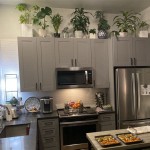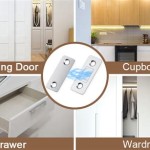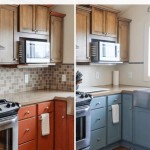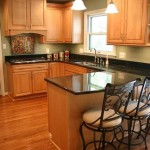Kitchen Ideas With Cherry Cabinets: A Comprehensive Guide
Cherry cabinets offer a timeless appeal, adding warmth and sophistication to any kitchen design. The natural reddish-brown hue and distinctive grain patterns of cherry wood create a visually rich aesthetic that complements a variety of styles, from traditional to contemporary. However, effectively integrating cherry cabinets into a kitchen design requires careful consideration of color palettes, countertop materials, hardware finishes, and overall layout. This article provides a detailed exploration of design ideas and strategies for creating a stunning and functional kitchen featuring cherry cabinets.
Understanding Cherry Wood Characteristics
Before embarking on a kitchen renovation or remodel with cherry cabinets, it is crucial to understand the inherent characteristics of the wood itself. Cherry wood is known for its aging process, where its initial lighter reddish-brown color gradually darkens over time with exposure to light. This natural patina is a desirable feature for many, adding depth and character to the cabinets. However, it is important to factor this color change into the overall design plan, especially when selecting complementary materials like countertops and backsplashes. Uneven exposure to light can result in inconsistent darkening, so it is advisable to maintain consistent light exposure across all cabinet surfaces.
There are typically two primary grades of cherry wood used in cabinetry: standard cherry and select cherry. Standard cherry may exhibit more variations in color and grain patterns, including knots and mineral streaks, which some homeowners find appealing for its rustic charm. Select cherry, on the other hand, features a more uniform color and tighter grain, resulting in a cleaner and more refined appearance. The choice between standard and select cherry depends on the desired aesthetic and budget considerations, as select cherry typically commands a higher price point.
Furthermore, the finishing process significantly impacts the final appearance of cherry cabinets. A clear coat finish allows the natural color of the wood to shine through and highlights its grain patterns. Staining can subtly alter the color of the wood, enhancing its richness or creating a more uniform tone. Glazing adds depth and dimension to the cabinet doors and drawers, accentuating the details of the design. The selection of the appropriate finish is paramount in achieving the desired look and feel for the kitchen.
Complementary Color Palettes for Cherry Cabinets
Choosing the right color palette is essential for creating a harmonious kitchen design with cherry cabinets. The warm tones of cherry wood can be effectively balanced with a variety of colors, depending on the desired mood and style of the kitchen. Light and neutral colors like white, cream, and beige create a bright and airy feel, contrasting beautifully with the richness of the cherry cabinets. These colors are particularly well-suited for smaller kitchens, as they reflect light and make the space appear larger.
For a more dramatic and sophisticated look, consider pairing cherry cabinets with darker colors like gray, navy blue, or even black. These colors create a striking contrast and emphasize the warmth of the wood. However, it is important to use these darker colors judiciously, as they can make a kitchen feel smaller and more enclosed. Balancing the darker colors with lighter accents and ample lighting is crucial for maintaining a bright and inviting atmosphere.
Green is another complementary color that works well with cherry cabinets. Soft sage green or olive green can create a natural and earthy feel, while bolder shades of green can add a pop of color and vibrancy. Green is particularly well-suited for kitchens with a more traditional or farmhouse-inspired design.
Ultimately, the choice of color palette depends on personal preferences and the overall design aesthetic of the kitchen. Testing different color combinations with paint samples and online design tools can help visualize the final result and ensure a cohesive and harmonious look.
Countertop and Backsplash Pairings With Cherry Cabinets
The selection of countertops and backsplashes plays a critical role in complementing cherry cabinets and enhancing the overall kitchen design. Different countertop materials offer varying degrees of durability, maintenance requirements, and aesthetic appeal. Granite, quartz, marble, and butcher block are popular choices for kitchen countertops, each with its unique characteristics.
Granite, with its natural beauty and durability, is a classic choice for pairing with cherry cabinets. Light-colored granite with warm undertones, such as cream or beige, can complement the richness of the wood, while darker granite with contrasting veining can create a more dramatic effect. Quartz, an engineered stone, offers a wide range of colors and patterns, providing greater design flexibility. White or light gray quartz countertops can create a clean and contemporary look, while warmer tones like cream or beige can complement the traditional appeal of cherry cabinets.
Marble, with its timeless elegance and luxurious feel, is another option for pairing with cherry cabinets. However, marble is a softer stone and requires more maintenance than granite or quartz. White marble with subtle gray veining can create a sophisticated and airy feel, while darker marble can add a touch of drama and opulence.
Butcher block countertops offer a warm and rustic appeal, complementing the natural character of cherry cabinets. Butcher block is also a practical choice for food preparation, providing a durable and hygienic surface. However, butcher block requires regular oiling and sealing to prevent water damage and staining.
The backsplash serves as a visual focal point in the kitchen and should complement both the cabinets and countertops. Subway tile, with its classic design and versatility, is a popular choice for backsplashes. White subway tile can create a clean and timeless look, while colored subway tile can add a pop of personality and visual interest. Glass tile, with its reflective surface, can brighten up the kitchen and add a touch of modern elegance. Mosaic tile, with its intricate patterns and textures, can create a unique and eye-catching backsplash.
The choice of countertop and backsplash materials should be carefully considered to create a cohesive and harmonious kitchen design that complements the beauty of cherry cabinets.
Hardware Finishes and Lighting Considerations
Selecting the right hardware finishes and lighting fixtures is crucial for completing the kitchen design and enhancing the functionality of the space. Hardware, including cabinet knobs, pulls, and hinges, should complement the style of the cabinets and the overall aesthetic of the kitchen. Brushed nickel, oil-rubbed bronze, and black finishes are popular choices for hardware, each offering a different look and feel.
Brushed nickel hardware offers a clean and contemporary look, complementing both light and dark-colored cabinets. Oil-rubbed bronze hardware adds a touch of warmth and elegance, particularly well-suited for traditional or rustic-style kitchens. Black hardware creates a striking contrast with light-colored cabinets and adds a touch of modern sophistication. The choice of hardware finish should be consistent throughout the kitchen to create a cohesive and unified look.
Adequate lighting is essential for creating a functional and inviting kitchen space. A combination of ambient, task, and accent lighting is necessary to provide sufficient illumination for all activities. Ambient lighting provides overall illumination for the kitchen, typically achieved with recessed lighting or ceiling fixtures. Task lighting focuses on specific work areas, such as countertops and sinks, and is typically provided by under-cabinet lighting or pendant lights. Accent lighting highlights specific features of the kitchen, such as artwork or decorative items, and is typically achieved with spotlights or track lighting.
Under-cabinet lighting is particularly important for illuminating countertops and making food preparation easier. Pendant lights can be hung over kitchen islands or breakfast bars to provide both task lighting and visual interest. Dimmable lighting allows for adjusting the brightness of the lights to create a different mood and atmosphere. Natural light is also an important factor to consider, and maximizing natural light sources, such as windows and skylights, can significantly enhance the brightness and appeal of the kitchen.
By carefully selecting hardware finishes and lighting fixtures, homeowners can create a functional and aesthetically pleasing kitchen space that complements the beauty of cherry cabinets.
Layout and Design Styles for Cherry Cabinet Kitchens
The layout of a kitchen is paramount to its functionality and efficiency. Popular kitchen layouts include the galley kitchen, the L-shaped kitchen, the U-shaped kitchen, and the island kitchen. The galley kitchen is ideal for smaller spaces, with cabinets and appliances arranged along two parallel walls. The L-shaped kitchen is versatile and can be adapted to various room sizes, with cabinets and appliances arranged along two adjacent walls. The U-shaped kitchen offers ample counter space and storage, with cabinets and appliances arranged along three walls. The island kitchen features a freestanding island that provides additional counter space, storage, and seating.
The choice of kitchen layout depends on the size and shape of the room, as well as the homeowner's specific needs and preferences. Traffic flow and work zones should be carefully considered to ensure a functional and efficient kitchen design.
Cherry cabinets can be incorporated into a variety of design styles, from traditional to contemporary. In a traditional kitchen, cherry cabinets can be paired with ornate details, such as raised panel doors, crown molding, and antique hardware. In a contemporary kitchen, cherry cabinets can be combined with sleek lines, minimalist hardware, and stainless steel appliances. In a transitional kitchen, cherry cabinets can be blended with both traditional and contemporary elements to create a balanced and harmonious look.
The versatility of cherry cabinets allows for endless design possibilities, making them a popular choice for homeowners seeking a timeless and elegant kitchen design.
Maintaining and Caring for Cherry Cabinets
Proper maintenance and care are essential for preserving the beauty and longevity of cherry cabinets. Regular cleaning with a soft cloth and mild soap is recommended to remove dust and grime. Avoid using harsh chemicals or abrasive cleaners, as they can damage the finish of the cabinets. Wipe up spills immediately to prevent staining and water damage. Periodically polishing the cabinets with a furniture polish specifically designed for wood can help maintain their luster and protect the finish.
Protecting cherry cabinets from excessive exposure to sunlight is also important for preventing uneven darkening. Using window treatments, such as blinds or curtains, can help control the amount of sunlight that enters the kitchen. Maintaining consistent light exposure across all cabinet surfaces can also help ensure even darkening over time.
By following these simple maintenance tips, homeowners can keep their cherry cabinets looking beautiful for years to come.

25 Cherry Wood Kitchens Cabinet Designs Ideas

7 Cherry Kitchen Design Ideas That Give Your Home A New Look Decorcabinets Com

How To Modernize Cherry Kitchen Cabinets Lily Ann

What Paint Colors Look Best With Cherry Cabinets

Charleston Cherry Cabinets Rta Kitchen

120 Cherry Color Kitchens Ideas Cabinets Kitchen Design Wood

3 Ways Kitchen Designs Are Using Cherry Cabinets And Other Dark Woods

7 Cherry Kitchen Design Ideas That Give Your Home A New Look Decorcabinets Com

Custom Cherry Cabinet Kitchen Design Line Kitchens In Manasquan New Jersey

Kitchen Image Bathroom Design Center








